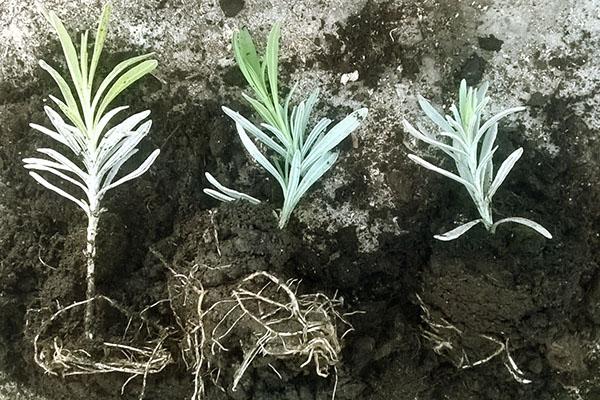Reproduction of lavender: simple and productive
 When the variety of a favorite flower plant is very expensive, then the housewives resort to various tricks. One of them is the propagation of lavender by self-seeding, cuttings and cuttings. Thus, it is enough to pay a lot of money once for one bush of a rare variety, and then independently breed it into a whole plantation.
When the variety of a favorite flower plant is very expensive, then the housewives resort to various tricks. One of them is the propagation of lavender by self-seeding, cuttings and cuttings. Thus, it is enough to pay a lot of money once for one bush of a rare variety, and then independently breed it into a whole plantation.
Read also the article: lavender planting and care in the open field in the suburbs!
Propagation of lavender in three ways
Many do not have the opportunity to spend too much time and energy on their front garden. Therefore, they try to follow the path of least resistance. Having considered each individual method, the florist has the right to choose the one that suits his taste.
It is advised to replant seedlings at an early age. After all, a large root system is difficult to tolerate such "transportation".
From seeds directly to seedlings
Before taking drastic measures, you should first look under the bush. If the gardener does not have the habit of cutting the flower stalks, then he will find many seedlings under his plant, which serves as an excellent support for the propagation of lavender. It is best to carefully dig them up and plant them in another area. It is important to consider the following points:
- A place. In the garden, the sunniest flower bed is selected for him. Culture is developing very poorly in the shadows. The bush becomes less lush and the flowering will be less abundant.
- The soil. Lavender does not tolerate acidified earth. To do this, before planting, it is advised to make a little ash or lime.
- Mulching. A cover of bark, chips or stones is lined around the bush to create friability and a humid microclimate.
- Regularity of watering. Irrigation is carried out as the soil dries up, as well as after intense heat.
In addition, it is important to know that the proximity of groundwater for a plant is destructive. So, alpine slides or hills for him will be the most reliable place of residence.
Cuttings or layering
The following two methods are very popular. In the first case, it is recommended to cut woody shoots. Further, peduncles are removed from them so that they do not deplete the stalk. Then they put them in water. When they put out a sufficient number of roots, the stems are planted in the ground.
The root collar of the seedling should not be completely covered with mulch. Otherwise, the rhizome will start to rot.
A young and elastic branch is selected as a layering. It should not be covered with bark. They dig a hole 10-12 cm from the bush, press the shoot against it, securing the place of contact with a paper clip, and cover it with earth. Once the plant is rooted, it is cut from the parent crop. After a while, the seedling is transplanted to a permanent place, without missing watering.
Such methods of lavender propagation are in great demand among flower growers, since they are the most productive. So, you always have to try and experiment.